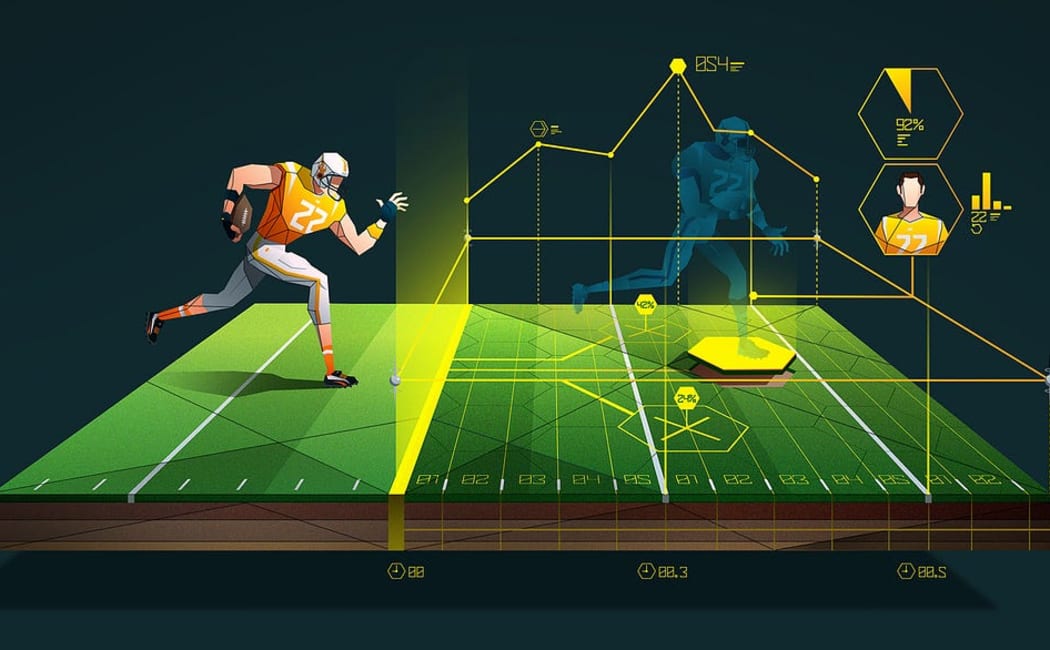How Technology Is Being Used in Sports Analytics

Introduction: The Rise of Data-Driven Sports
In recent years, sports analytics has transformed from simple stats tracking into a high-tech discipline powered by artificial intelligence (AI), machine learning, IoT sensors, and advanced video analysis. Modern teams, coaches, and athletes now depend on these tools to gain insights into player performance, minimize injuries, and create smarter strategies. With the global sports technology market expanding rapidly, data analytics is no longer optional—it’s the competitive edge defining the future of sports.
1. AI & Machine Learning for Performance and Strategy
The use of AI and machine learning in sports allows teams to process vast amounts of match data within seconds. Algorithms can recognize tactical patterns, predict outcomes, and provide actionable insights in real-time. Whether it’s predicting player fatigue, optimizing formations, or identifying opponent weaknesses, data-driven systems help coaches make smarter decisions instantly.
For instance, predictive analytics can use GPS and biometric data from wearables to determine which players are at higher risk of injury. By analyzing heart rate, workload, and recovery time, coaches can fine-tune training intensity to maintain peak performance and prevent overuse injuries.
2. Wearables & IoT: Data From the Field
Wearable technology and IoT devices are now key parts of modern training. Smart vests, GPS trackers, and wristbands measure metrics like acceleration, speed, distance covered, and body temperature. This data helps trainers and analysts understand how athletes move, how much strain they’re under, and how their bodies respond to pressure.
IoT sensors embedded in equipment and stadiums feed real-time information to cloud platforms. This gives coaches an instant overview of team fitness levels, improving synchronization during training sessions and optimizing tactical decisions mid-game.
3. Real-Time Video Tracking & Computer Vision
Another revolutionary area is computer vision and video analytics. Multi-camera tracking systems capture detailed movements of players and the ball throughout a match. AI-powered software converts this footage into measurable insights—player positions, passing accuracy, sprint speed, and defensive formations.
These tools let analysts visualize performance through heatmaps and trajectory lines, helping coaches identify strengths and weaknesses. They can simulate “what-if” scenarios, comparing tactical options based on previous match data. This not only enhances performance reviews but also refines strategic planning for upcoming games.
4. Injury Prevention & Athlete Health Optimization
Injuries can derail entire seasons, so injury prevention is now one of the top uses of sports analytics. AI models analyze historical performance data alongside real-time wearable data to identify early warning signs of potential injury. For example, subtle changes in movement or imbalanced load distribution can trigger alerts for coaches to modify training plans.
By using motion capture and heart rate variability tracking, sports scientists can design recovery-focused training schedules. These insights help athletes maintain peak fitness, reduce fatigue, and extend their professional lifespan.
5. Fan Experience & Engagement Through Data
Technology isn’t limited to athletes—it’s also reshaping how fans experience sports. Real-time data dashboards, augmented reality (AR) and virtual reality (VR) replays, and interactive mobile applications offer spectators immersive ways to engage. Fans can now view live match stats, player comparisons, and in-depth analytics from the comfort of their homes or stadium seats.
In esports and hybrid competitions, analytics tools personalize content delivery—suggesting highlights, stats, and player interactions based on user behavior. This keeps audiences more connected and enhances fan loyalty.
6. Emerging Trends & Market Growth
The sports analytics industry is projected to grow exponentially in the next decade. Teams are investing in cloud-based analytics platforms, real-time data visualization, and edge computing to minimize latency and improve performance tracking. These innovations make it easier for analysts to process high-speed data without compromising accuracy.
Future-ready stadiums are also integrating IoT sensors for crowd management, AR/VR-based entertainment, and blockchain for secure data exchange. Lightweight wearables with integrated biometric sensors are becoming mainstream, providing more precise and accessible performance data for athletes and coaches.
7. Challenges & Considerations
While the benefits are immense, sports analytics faces several key challenges:
- Data quality & standardization: Different sensors and inconsistent data formats make analysis complex.
- Privacy & ethics: Athlete biometric and performance data must be securely stored and ethically managed.
- Cost barriers: Advanced technology, skilled staff, and infrastructure are costly for smaller organizations.
- Real-time processing: High-speed data analytics requires robust hardware and reliable network infrastructure.
- User adoption: Coaches and athletes must trust analytics results, requiring proper training and integration.
Conclusion
Technology in sports analytics has revolutionized how teams approach performance, health, and fan engagement. With AI, IoT, and machine learning driving real-time insights, organizations can predict outcomes, prevent injuries, and optimize strategies. As innovations like AR, VR, and blockchain continue to advance, the sports world will become more connected, data-driven, and intelligent. The future of sports belongs to those who harness the power of analytics—not just for numbers, but for winning smarter and playing better.
